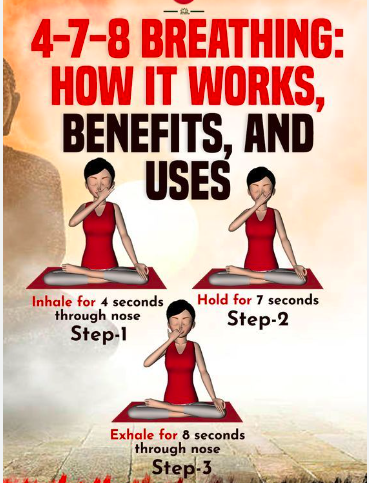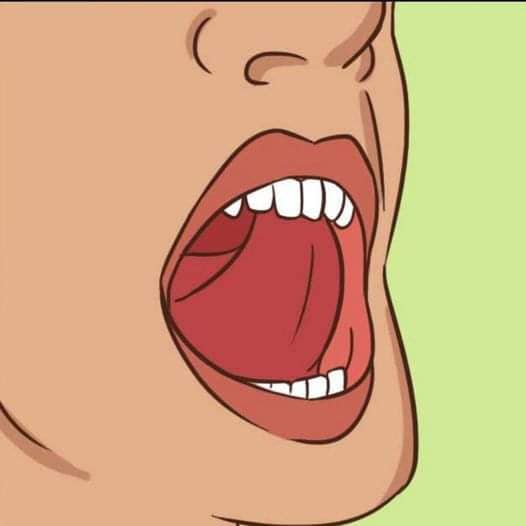Touching your tongue to the roof of your mouth while breathing can have several beneficial effects, particularly related to relaxation and breathing efficiency. Here’s a detailed look at how this simple action can be powerful:
Benefits and Effects:
Enhanced Breathing Control:
Diaphragmatic Breathing: Placing your tongue on the roof of your mouth encourages deeper, diaphragmatic breathing. This type of breathing involves the diaphragm and helps fill the lungs more fully compared to shallow chest breathing.
Relaxation Response:
Parasympathetic Activation: Touching the tongue to the roof of the mouth can help activate the parasympathetic nervous system, which is responsible for relaxation and reducing stress. This can lead to a calming effect and lower heart rate.
Improved Posture and Alignment:
Cervical Spine Alignment: Proper tongue posture helps maintain the alignment of the cervical spine (neck area). This can contribute to better overall posture and may alleviate neck tension and discomfort.

Oral Health Benefits:
Natural Seal: Keeping the tongue on the roof of the mouth creates a natural seal, which can help keep the mouth closed and reduce the risk of dry mouth and related issues.
Enhanced Focus and Mental Clarity:
Mindfulness and Centering: This simple action can serve as a mindfulness practice, helping you to center your focus and clear your mind. It’s a technique often used in meditation and relaxation exercises.
Improved Swallowing:
Efficient Swallowing Mechanism: Proper tongue posture supports the efficient swallowing mechanism. This can be particularly beneficial for those who experience swallowing difficulties or want to improve their swallowing technique.
How to Practice:
- Find a Comfortable Position: Sit or stand comfortably with a straight posture.
- Place the Tongue: Gently place the tip of your tongue on the roof of your mouth, just behind your front teeth.
- Breathe Slowly: Inhale deeply through your nose, allowing your abdomen to expand, and exhale slowly through your nose or mouth.
- Focus: Pay attention to your breath and the feeling of your tongue against the roof of your mouth. Try to maintain this position while you breathe deeply.
The “4-7-8” Breathing Technique

The “4-7-8” breathing technique, developed by Dr. Andrew Weil, is a simple yet effective method for relaxation and stress reduction. This technique is designed to promote calmness, improve focus, and enhance overall well-being by regulating the breath and engaging the parasympathetic nervous system.
Tongue Position: Touch the tip of your tongue to the roof of your mouth, just behind your front teeth. Keep it there throughout the entire practice.
Exhale: Begin by exhaling completely through your mouth, ensuring all the air is expelled from your lungs. You should make a whooshing sound as you exhale.
Breathing Cycle:
- Inhale: Close your mouth and inhale quietly through your nose for a count of 4.
- Hold: Hold your breath for a count of 7.
- Exhale: Exhale completely and forcefully through your mouth for a count of 8, making a whooshing sound as you breathe out.
Repeat:
Complete this cycle for a total of four breath cycles.
Routine:
Frequency: Dr. Andrew Weil recommends practicing this technique at least twice a day.
Initial Practice: Start with four breath cycles per session.
Progression: After one month, you can gradually increase to eight breath cycles per session.
Benefits:

Relaxation and Stress Reduction:
The “4-7-8” technique helps activate the parasympathetic nervous system, which promotes relaxation and reduces stress levels.
Improved Sleep:
Practicing this technique before bedtime can help calm the mind and prepare the body for restful sleep.
Reduced Heart Rate and Blood Pressure:
Regular practice of the “4-7-8” technique can lead to lower heart rate and blood pressure, contributing to cardiovascular health.
Enhanced Digestion:
By promoting relaxation and reducing stress, the technique can help improve digestive function.
Increased Mental Clarity and Focus:
The technique helps clear the mind and improves focus by calming the nervous system and reducing mental clutter.
Mindfulness and Awareness:
It encourages mindfulness by focusing attention on the breath, which can enhance overall awareness and presence.
Additional Tips:
Dr. Andrew Weil suggests doing this at least twice a day, for four breath cycles each. After the first month, you can increase to eight breath cycles every session.
“After two or three months of regular practice, the physiology undergoes major modifications. This reduces heart rate, blood pressure, and helps digestion,” Weil explains.
Consistency: To experience the full benefits, practice the technique consistently as part of your daily routine.
Comfortable Position: Perform the exercise in a comfortable seated position with your back straight and shoulders relaxed.
By integrating this simple practice into your routine, you can experience its calming and health-promoting effects, contributing to overall well-being and improved respiratory function.

